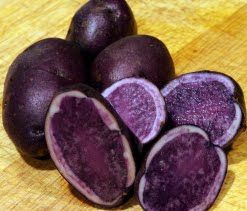As a follow-up to my post about
Elimination Communication, I wanted to talk about diapers, because much of the time,
Noah is still a diapered baby.
Now and again, I read an article that says cloth diapers are not any more environmentally friendly than disposables, because of all the energy and water needed to launder them. Then I read
this article in the NY Times that described cloth diapers as the Achilles heal of all these hard-core environmentalists. Strange times. But in my experience, cloth diapers
1) Are not that difficult, even with Eug and I both working.
2) Don’t use as much energy or water as disposables.
3) Don’t contribute to landfill waste and
4) Are much, much cheaper than disposables, even when you buy
bumGenius
, the cadillac of diapers
5) Bring fewer weird chemicals into contact with your baby's skin than disposables.
1) Are not that difficult
Like many cloth diapers, the diapers we ended up going with (
bumGenius
Diapers, [though we enjoyed
gDiapers
briefly
when Noah was tiny] ) go on like disposables. We throw them in the diaper pail and empty the diaper pail into the wash once every couple of days. It isn’t super messy. Noah only poops at home (so far), so we just wash his bum in the sink when we need to.
Taking the diapers to and from the washer takes 5 minutes; hanging and sorting the diapers takes about 90 minutes a week. This is how I think about the time commitment:
i) Time to and from the washer=time to and from the outside trash (they cancel eachother out)
ii) Sorting and hanging the diapers: 1.5 hours/week (if you don’t use a dryer) X 52 weeks/year X 2.5 years = 195 hours over two and a half years. Thinking about what you’d actually be doing those 1.5/week hours if you weren’t sorting diapers is probably also relevant here-- this isn’t rocket science work, it’s the kind of thing you’ll do when you don’t feel like doing anything else, while you’re listening to NPR (because you’re probably an NPR listener...sorry for the non-U.S. readers who don’t know about NPR, I’ll bet if you were in the U.S. you’d be an NPR listener) and watching your little person.
iii) I won’t factor in how much time it takes to go to the shop and buy disposables, because I figure everyone does that differently.
iv) I’ll break down the time commitment a bit further when I talk about cost.
2) Don’t use as much energy or water as disposables.
There have been some marketing campaigns that claim the impact of growing the cotton for cloth diapers, as well as laundering the diapers, use more energy and water than producing disposable (plastic) diapers. This doesn’t take into account the landfill space used by plastic diapers (which I’ll talk about next). Reading these analyses, I believe they're comparing totally different things. I tried making a comparison but the more I dug down, the more I felt like my comparison couldn’t quantify all the variables involved (where/how the cotton was grown, where the woodpulp for disposables was grown, how it was processed, how you wash and dry your cloth diapers, etc).
I don't think people don’t choose disposables because they think they’re as environmentally friendly or more environmentally friendly than cloth diapers. I think they choose them because they think they’re easy, and that cloth diapers are prohibitively difficult. That said, rather than making a comparison I’ll just talk about what’s involved in using cloth diapers:
Making the Cotton
Your babies diapers will be used many, many times, possibly for multiple children. The cotton used to make the diapers will look a lot like the cotton used for clothing. I’d argue that you can offset the amount of cotton used in diapers by buying used clothes for your baby and using all your diapers until they're worn out. The cotton use is simply not that great.
Water
If you are afraid of the energy and water it takes to produce and launder a cloth diaper, consider that it takes around 3 gallons to flush a toilet. Your front loader uses 25 gallons/water per wash. You wash each load of diapers twice so you use about = 50 gallons per wash. Each load will have around 20 diapers (which is often more than one pee per diaper). If your baby was flushing the toilet each time he/she peed (as he/she likely will in a couple of years), the resulting use of water is equitable. So at some level, an ecological decision is actually made by having a new baby, but the amount of water used to launder diapers is not more than the amount of water needed for one person, flushing a regular toilet.
The electricity used to run the washer/washing machine
A front loader doesn’t use that much more energy than a couple of lightbulbs in the house (the argument for a smaller house and switching the lights off!). The energy needed to heat the water is more significant. If you reduce the number of hot washes (for example, we only do a hot wash when we have a poopy diaper), the energy of those additional six loads laundry/week is low. The key here is NOT using the dryer. The dryer uses a lot of energy. We use a spinner (similar to a giant electric salad spinner) for two minutes, to get out extra water. Then we put our diapers on a little clothes horse, and they take about a day to dry. My conclusion after reading a lot about the energy taken to wash diapers is that you can compensate for this energy pretty easily in other areas of the house. The overall energy use of the household has not skyrocketed.
3) Cloth diapers don’t contribute to landfill waste.
2.1% of U.S. landfill waste is diapers. Plastic Diapers take hundreds of years to decompose, and the plastic never goes away. It's unnecessary waste.
From
Clean Air Council: An average child will use between 8,000 -10,000 disposable diapers ($2,000 worth) before being potty trained. Each year, parents and babysitters dispose of about 18 billion of these items. In the United States alone these single-use items consume nearly 100,000 tons of plastic and 800,000 tons of tree pulp. We will pay an average of $350 million annually to deal with their disposal and, to top it off, these diapers will still be in the landfill 300 years from now. Americans throw away 570 diapers per second. That's 49 million diapers per day.
4) Cloth diapers are much, much cheaper than disposables.
These are how the calculations pan out in our household*:
Cloth Diapers [This will be significantly less if you have more than one child.]
$17 per diaper, 30 diapers (each diaper is a one-size fits the entire time the baby is in diapers) = $510 (Note that I'm NOT use the more complicated, but cheaper, prefolds. I'm using diapers that go on exactly like disposables)
Washer costs (using a cost of 9c/load in electricity, 5c/load for detergent, we don't pay for water) $2.31/month, $28/year for washer where detergent is 0.05c/load
Total, given 30 months of diapering is about $600
Disposable Diapers
$70/month, for 30 months =$2100
Difference in cost in the Adams Household
$1500
There’s two ways to think about this money:
i) $1500/$23 an hour=65 hours pre deductions, 85 hours after deductions. This is a
Your Money or Your Life
style calculation. It’ll take me 85 hours of work to earn the money I would need to keep Noah in disposables, rather than cloth. However, my paycheck is already spoken for so it would mean cutting back on other parts of our budget. I was happy to pay for the diapers up front, because it means fewer monthly expenses.
ii) $1500/195=$7.69/hour after deductions for sorting diapers. For me, this is actually a good rate, because there aren’t any other things I can do at home, while watching Noah, listening to music, and doing something good for the environment, and still earn $7.69/hour.
and lastly,
5) cloth diapers don’t put your baby’s skin in contact with weird chemicals.
For many parents, this reason trumps all the others.
*let me know if you want any details on how these costs work out.















 Tip 5: Make Fabric Snakes for your doors.
Tip 5: Make Fabric Snakes for your doors.

